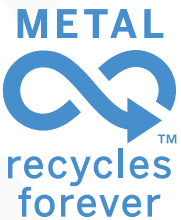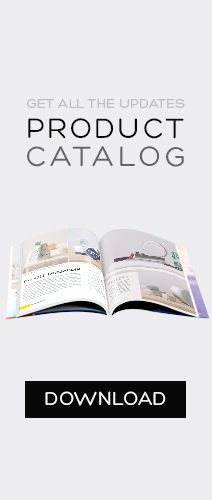Public sentiment towards using metal packaging is improving in Europe. People are becoming more aware of the negative consequences of utilizing non-sustainable forms of packaging. This has lead to more people actively choosing to use products they know are sustainably made, can be recycled, and are better for the earth than plastic packaging. A major factor for this increase is due to the public’s increased exposure to information about how recyclable metals are a sustainable form of packaging.
 Metal Packaging Europe is an organization that is focused on increasing the amount of metal packaging used in Europe for both industrial and commercial products. They do this by providing a link between manufacturers, suppliers, national associations, and consumers. Metal Packaging Europe provides a wealth of information on the benefits of metal packaging and is involved in EU politics to create better sustainable legislation. Currently one of their main focuses is increasing the use of their “Recycles Mark.” The “Recycles Mark” is a logo that can be used on metal packaging that meets Metal Packaging Europe’s criteria and designates that a product is recyclable. Metal Packaging Europe’s criteria for using the logo includes that the product must be made of a recyclable metal (iron or aluminum), the logo should be used in a location designated by Metal Packaging Europe, and it should be a design/color predesignated by Metal Packaging Europe. Additionally, Metal Packaging Europe reserves the right to remove the logo from any product they feel does not meet their requirements [1,2,3]. Additional information for using the “Recycles Mark” can be found here: https://www.metalpackagingeurope.org/recyclesmark.
Metal Packaging Europe is an organization that is focused on increasing the amount of metal packaging used in Europe for both industrial and commercial products. They do this by providing a link between manufacturers, suppliers, national associations, and consumers. Metal Packaging Europe provides a wealth of information on the benefits of metal packaging and is involved in EU politics to create better sustainable legislation. Currently one of their main focuses is increasing the use of their “Recycles Mark.” The “Recycles Mark” is a logo that can be used on metal packaging that meets Metal Packaging Europe’s criteria and designates that a product is recyclable. Metal Packaging Europe’s criteria for using the logo includes that the product must be made of a recyclable metal (iron or aluminum), the logo should be used in a location designated by Metal Packaging Europe, and it should be a design/color predesignated by Metal Packaging Europe. Additionally, Metal Packaging Europe reserves the right to remove the logo from any product they feel does not meet their requirements [1,2,3]. Additional information for using the “Recycles Mark” can be found here: https://www.metalpackagingeurope.org/recyclesmark.
 It is Metal Packaging Europe’s hope that this logo influences consumers to better understand they have a role to play in recycling metal products. By recycling metal products the raw materials can be reused to produce future goods. The logo also communicates the intrinsic value of recycling metals due to the permanent properties of their base elements. The logo gives manufacturers the opportunity to state that their product has been designed with sustainable, recyclable metal and allows consumers to make informed decisions when purchasing products [1,2,3].
It is Metal Packaging Europe’s hope that this logo influences consumers to better understand they have a role to play in recycling metal products. By recycling metal products the raw materials can be reused to produce future goods. The logo also communicates the intrinsic value of recycling metals due to the permanent properties of their base elements. The logo gives manufacturers the opportunity to state that their product has been designed with sustainable, recyclable metal and allows consumers to make informed decisions when purchasing products [1,2,3].
The “Recycles Mark” logo is currently used with metals that breakdown into the elements of aluminum and iron [3]. A few of the most common examples of these metals are tinplate, steel, and aluminum blends. Steel and tinplate are both largely made of Iron. Steel is an alloy of iron and carbon, while tinplate is steel with an additional layer of tin. Aluminum blends are alloys that contain a high percentage of aluminum with a few other compounds added in. The other compounds, often magnesium, zinc, or copper, provide different properties based on the product’s needs [4]. Aluminum and Iron are the focus for “Recycles Mark” because they are the two most commonly used metals for packaging and can be easily recycled.
The message promoted by Metal Packaging Europe through the “Recycles Mark” is extremely important because recycling vastly decreases the amount of energy required in the production of metal packaging. Recycling and reusing aluminum requires 95% less energy than is needed to extract and process new aluminium ore. One ton of recycled aluminum equals an energy saving of 14,000 kilowatt hours of energy, which is enough energy to power 1.5 average US homes for a year. Beyond just the energy reductions 1 ton of recycled aluminum saves the use of 40 barrels of oil and 10 cubic yards of landfill space [5]. Oil is a nonrenewable resource that has been shown to have many negative effects on the environment, most notably being climate change. Landfills are becoming more and more full and can be very harmful for the natural ecosystems where they are located. Recycling steel and tinplate doesn’t have as large of energy savings as aluminum, but are still quite substantial. One ton of recycled steel or tinplate saves 642 kilowatt hours of energy, 1.8 barrels of oil, and 4 cubic yards of landfill space. On a global scale steel is currently recycled at a rate of over 80%, which saves enough energy to power 18 million homes for a year [5,6,7].
Using the “Recycle Marks” logo not only benefits the environment, but it also helps manufacturers. The logo attracts consumers and increases product visibility. Consumers that are already environmentally aware are drawn to companies that are likewise minded. Consumers that aren’t already environmentally conscious are exposed to the idea of how beneficial using renewable tinplate and aluminium containers is. In the long term these consumers may become more environmentally conscious and purchase products that align with those views. The “Recycle Marks” logo is a way for companies to reach this audience, help the environment, and likely increase their sales.
The “Recycles Mark” logo represents a way to connect the often disconnected manufacturer and consumer. It acts as a subtle way to make sure both parties understand the benefits of recycling, reminds consumers to purchase recyclable metal products, increases product sales, and helps manufacturers meet resource efficiency targets. By bridging the gap between both parties it is the hope that metal becomes the preferred choice for consumer and industrial packaging in Europe.

References
[1] "Metal Packaging Europe gives Europe’s rigid metal packaging industry a unified voice" (retrieved May 2019), by Metal Packaging Europe.
[2]"Recycles Mark Off-Pack Guidelines. Recycles Mark Off-Pack Guidelines" (retrieved May 2019), by Metal Packaging Europe.
[3]" Recycles Mark On-Pack Guidelines., Recycles Forever Mark" (retrieved May 2019), by Metal Packaging Europe.
[4] "Toward a Greener Soda Can - NYTimes.com" (retrieved June 2012), by Matthew L. Wald.
[5]"FAQ: Benefits of Recycling ", by Stanford University, California.
[6] "Steel is the World's Most Recycled Material" (retrieved April 2019), by Steel Recycling Institute.
[7] “Component end-of-life management: Exploring opportunities and related benefits of remanufacturing and functional recycling", by Derek Diener and Anne-Marie Tillman.





